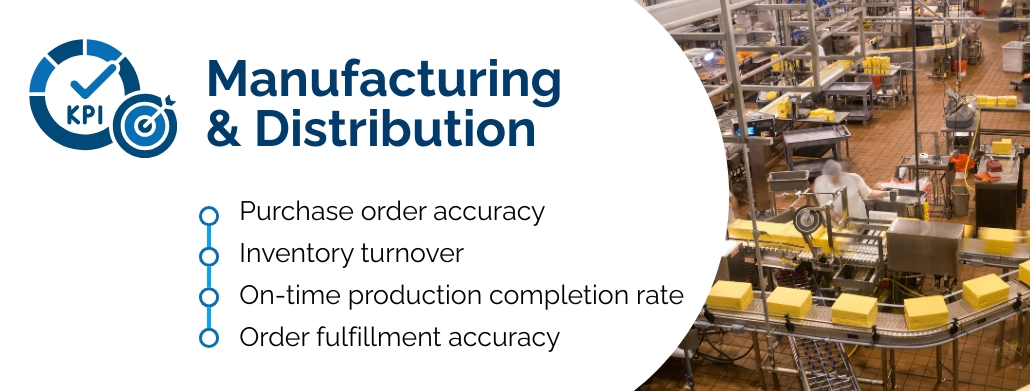KPI clarity: 4 steps every finance leader should know
Are you confident that your key performance indicators (KPIs) are driving your company toward long-term success? At Alta Vista, we believe that technology should work for people, not the other way around. Research shows that companies with a clear sense of purpose achieve three times faster growth, stronger market share, and higher satisfaction from both employees and customers. But aligning KPIs with strategic goals and stakeholder relationships can be challenging.
In this blog post, we’ll walk you through four key steps to help you gain KPI clarity, positioning you for success as a financial leader. You’ll learn how to:
- Align your team’s efforts with a clear, purpose-driven strategy that fosters engagement and productivity
- Strengthen stakeholder relationships by understanding how your actions impact clients, employees, and the community
- Drive strategic growth by transforming KPIs into metrics that reflect your company’s values and purpose
We’ll also cover essential KPIs for key industries like Professional Services, Construction and Real Estate, and Distribution and Manufacturing, where Alta Vista helps clients turn their goals into reality. By focusing on mission-driven leadership and stakeholder alignment, you can harness KPIs as a powerful tool for growth. With Alta Vista’s expertise and hands-on support, we’re here to help you navigate this process every step of the way.
Step 1: Lay a solid financial foundation
Before diving into KPIs, let’s take a step back and examine your financial infrastructure. Think of it as the foundation of your business. Are you building on solid ground?
A well-structured system not only streamlines operations but ensures that as your business grows, your financial reporting scales with it. Without this clarity, it’s easy to run into trouble when you need to track financial performance across different departments, regions, or tax entities. This is where the importance of properly setting up your General Ledger and Business Structure comes in.
- General ledger setup: How detailed is your GL? Can you easily track expenses and revenue by project, client, or department?
- Business Structure: Are your departments, cost centers, and regions clearly defined? What about tax entities and consolidations?
Taking the time to structure your financial systems correctly from the start will prevent headaches down the road. As your company scales, initial metrics may no longer fit the growing complexity of your business.
As Tania Zieja, CFO of Halloran Consulting, wisely puts it: “If you don’t classify it, it’s hard to report on it later on. Think about where your company is headed and classify this data now so you can make data-driven decisions later.”
When your financial systems are set up for transparency and scalability, you unlock the ability to make informed, data-driven decisions. This visibility promotes accountability across the board, strengthening trust with both your employees and clients.
Step 2: Measure what matters
Once your financial foundation is solid, it’s time to focus on the metrics that move the needle. The right KPIs aren’t just numbers on a dashboard, they’re a compass. They help you track progress, uncover inefficiencies, and guide decisions that align with your company’s goals.
And when those goals go beyond just profit, when they include things like employee satisfaction, client trust, and long-term stability, KPIs become even more powerful. They help you lead with purpose and give your team something bigger to rally around.
Whether you’re in professional services, construction, manufacturing, or just scaling fast, here are the metrics worth watching.

- Project margins: Where utilization looks at individuals, margins zoom out to the team level. Encourage full-time tracking, then let project leads decide what’s billable — you’ll surface insights that improve planning and performance across the board.
- Days sales outstanding (DSO): Long payment cycles can quietly choke your cash flow. Tracking DSO helps you stay ahead of aging invoices and keep revenue moving. Pair it with automated billing and real-time dashboards to reduce delays and free up cash to reinvest in your team.
- Write-offs: Don’t let them fly under the radar. Every write-off is a data point — a signal that can help you price smarter or adjust expectations for future projects.
- Utilization: This metric is often the go-to, but it only tells part of the story. You’ll also need to track non-billable hours to get a true picture of how your team spends their time. The result? Better forecasting and more balanced workloads.

- Project cash flow: This metric shows whether a project generates or consumes cash. It’s a powerful lens for identifying execution wins—and where things may be off track.
- Work backlog: Visibility here brings peace of mind. Knowing what’s coming lets you allocate labor, plan revenue, and lead with confidence.
- Budget variance: Some variation is normal, but having a KPI threshold helps you spot what’s acceptable and what requires a deeper dive with project owners.
- Committed costs: In today’s environment of rising material costs and labor shortages, it’s critical to have committed supplier and subcontractor contracts. Locking in those commitments protects margins and mitigates risk, especially on long-term projects.

- Purchase order accuracy: Inaccurate POs create costly ripple effects, from missed deliveries to excess inventory. Tracking PO accuracy helps your team buy smarter, avoid delays, and keep production moving.
- Inventory turnover: A high turnover rate signals efficiency, but if it’s too high, stockouts can slow you down. Monitor this KPI to strike the right balance, free up working capital, and avoid carrying dead stock.
- On-time production completion rate: When production slips behind, everything else follows. This KPI helps you surface bottlenecks, improve scheduling, and meet demand without overextending your team.
- Order fulfillment accuracy: Getting the right order out the door on the first try isn’t just about logistics; it’s about customer trust. Track fulfillment accuracy to reduce returns, increase satisfaction, and protect your bottom line.

- Month-end & year-end close cycle: Long closes slow everything down. Tighten your close process to surface accurate financials faster—so you can pivot quickly, report with confidence, and stay one step ahead.
- Procure-to-pay cycle: Manual steps in the procure-to-pay process leave room for delays and errors. Automate the flow to boost accuracy, reduce costs, and improve cash control across departments.
- Billing accuracy: Errors in invoices delay payments and lead to a loss of trust. Precision billing helps protect revenue, expedite collections, and keep your customers happy.
- Cash flow forecasting: Cashing should never be a guessing game. Real-time forecasting provides finance leaders (like you) with the visibility to plan ahead, fulfill obligations, and grow with confidence.
These KPIs are just the beginning. Metrics will look different depending on your business model, sub-vertical, and growth stage.
At Alta Vista, we help you cut through the noise and focus on the KPIs that truly matter for your business. With the right processes and reporting structure in place, your data becomes a powerful driver of clarity, alignment, and momentum.
Not sure if you’re measuring the right things or getting the most out of your reports? We are here for you. We’ll help you review your processes, refine your reporting, and move forward with confidence.
Step 3: Empower your team with the right cloud-based tools
According to a Sage survey of 1,221 senior financial leaders, 84% have embraced cloud accounting—and it’s not hard to see why. Cloud-based solutions help businesses reduce manual effort, improve data accuracy, and increase agility.
With the right technology in place, your team can:
- Automate the busywork: Free your people from manual processes and repetitive tasks, so they can focus on higher-value work that moves the business forward.
💡 Insider tip: Sage Intacct and Microsoft Dynamics 365 Business Central automate key tasks—like auto-recognizing revenue and reconciling intercompany transactions—plus, set up workflows triggered by real-time events like hitting thresholds or inactivity. - Unify your data: Break down silos of single source truth, so everyone from PMs to finance leaders get real-time visibility into what matters most.
💡 Insider tip: With open APIs and easy integrations, both Sage Intacct and Microsoft Dynamics 365 Business Central play well with tools like Payroll, HR, CRM, and payments—so your teams can keep using their favorite platforms while syncing data across the business in real time. - Turn insight into action: With real-time data at your fingertips, your team can make faster, smarter decisions that align with your company’s mission and long-term goals.
💡 Insider tip: Sage Intacct and Microsoft Dynamics 365 Business Central offer customizable, user-friendly dashboards—filter, sort, and drill into key data without needing SQL or a database.
Cloud-based solutions don’t just boost productivity—they give your team back valuable time to focus on what really counts: serving clients, strengthening relationships, and scaling sustainability.
Step 4: Foster a culture of transparency and accountability
KPIs are more than just numbers, they’re a tool to drive collaboration and alignment across your team. When your team is engaged and empowered, KPIs spark valuable conversations that fuel progress.
Here’s how you can make them a powerful catalyst for growth:
- Foster transparency: Make KPI data accessible to everyone. Regularly share trends, review performance, and adjust strategies together to keep everyone aligned with your company’s mission.
- Celebrate what’s working: Acknowledge the hard work that leads to success. Celebrate both team and individual milestones, reinforcing the impact of hitting KPI targets and encouraging continued effort.
- Encourage continuous improvement: Use KPIs as an opportunity for constructive feedback. Work together to address challenges and identify solutions, fostering a growth mindset and shared responsibility for success.
The key is engagement. Your people are your biggest asset, and the strongest KPIs won’t move the needle without a team that’s connected, supported, and inspired.
AVT TIP: Build culture intentionally. At Alta Vista, every employee has an executive sponsor who checks in regularly. We also run an annual employee survey to gather feedback and measure internal Net Promoter Score (NPS). These simple practices help nurture a culture of trust, alignment, and shared accountability—so the whole team can grow together.
A word of encouragement
The path to KPI clarity might feel challenging at times, but the rewards are invaluable. By adopting a proactive approach and applying the strategies shared in this post, you’ll unlock your team’s true potential and pave the way for long-term success. Remember, it’s not just about the numbers—it’s about the people, the relationships, and the shared mission that propel your company forward.


